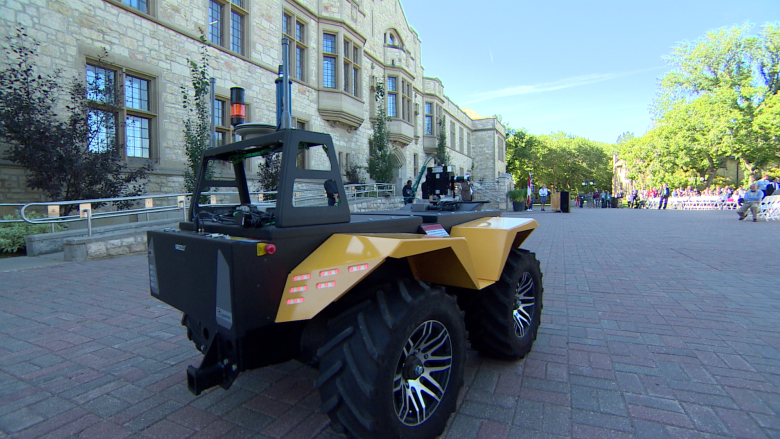Drone and robotic technology will be used to help maximize crop yields
The University of Saskatchewan has officially launched a new high-tech research centre to study food security and how Saskatchewan can grow even more for the world.
The program was launched Monday morning ahead of an international symposium being hosted at the university and included demonstrations of new drone technology to monitor crops and the land beneath them.
"It's probably the place in Canada to do all of this work," said Maurice Moloney, CEO of the university's Global Institute for Food Security. "What we have here is very strong computer science, excellent image acquisition and analysis."
"We have also ... very good agriculture engineering, robotics and so on," he said. "It's probably the place in Canada to do this work."
The research, part of the new Plant Phenotyping and Imaging Research Centre, at the university will help enhance crop breeding to find solutions for national and international food security. One of the approaches being studied includes high-tech digital imaging using drone technology.
"For agriculture, it's all about the payload that is attached onto the draganflyer [drone]," said Andrew Carson, customer service and training leader with Draganfly, a UAV manufacturer. "Identify factors affecting the crop that is unidentifiable with the human eye."
The drone Carson and his team developed for the university uses a multi spectral camera to analyze crops and fields.
"Agriculture has quickly developed into what some are saying is going to be the largest part of the UAV system," Carson said.
"You are able to gather high-resolution data allowing you to make more informed decisions."
Monday's launch also showcased a robotic vehicle that can be used to monitor crop development from the ground.
"You could actually seed at different rates at different part of the field and that way you are much more likely to get uniform germination," said Carson.
The research is funded by a more than $37-million grant from the federal government. Graduate students, technicians, software developers and researchers are expected to take part in the project over the next seven years.



